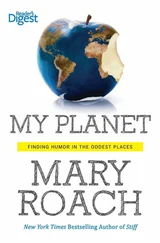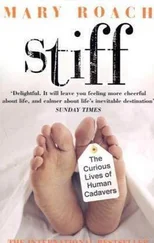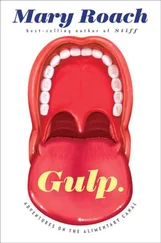One test diet scored even lower than the cubed foods. “It was milk shakes in the morning, lunch, and supper. And the next day, it was milk shakes in the morning, lunch, and supper,” says John Brown, the officer who had been in charge of the AMRL space cabin simulator. On a scale of 1 to 9, volunteers who lived on them for thirty days gave the food an average score of 3 (dislike moderately). Brown told me 3 probably meant 1: “The subjects filled out their forms telling you what you wanted to hear.” One subject confided to Brown that he and his fellow volunteers had been regularly dumping portions of their formula under the cabin flooring. Despite the diet’s unpopularity, the researchers evaluated no less than twenty-four different commercial and experimental liquid diet formulas. I once read an Air Force technical report that lists the desired attributes of edible paper: “Tasteless, flexible, and tenacious.” It’s how I imagine some of these space food guys.
Meanwhile, over at SAM, Norman Heidelbaugh was testing a liquid diet of his own devising. An Air Force press release called it the “eggnog diet.” May O’Hara described it as “sort of a powdered Ensure.” “That was really not acceptable,” she said with uncharacteristic bite to her words. Heidelbaugh himself seemed to leave a bad taste in people’s mouths.
Though it appeared that the science of nutrition was attracting a unique breed of gustatory sadist, other forces were at work here. It was the mid-sixties. Americans were enraptured by convenience and the space-age technologies that bestowed it. Women were going back to work, and they had less time to cook and keep house. A meal in a stick or a pouch was both a novelty and a welcomed time-saver.
That was the mindset that propelled one of the AMRL’s least popular liquid diets into a long and lucrative career as Carnation Instant Breakfast. The Space Food Stick also began life as a military washout. What the Air Force called “rod-shaped food for high-altitude feeding” was originally intended as food that could be poked through the port of a pressure suit helmet. “We couldn’t get them stiff enough,” O’Hara told me. So Pillsbury took back its rods and went commercial with them. Bourland says they occasionally went up with the astronauts simply as an onboard snack—sometimes under the name Nutrient-Defined Food Sticks and other times as Caramel Sticks, fooling no one.
Even the companies who made food sticks and breakfast drinks didn’t expect the American family to eat nothing else. I have reason to believe that a cabal of extreme nutritionists was influencing thought at NASA. These were men who referred to coffee as a “two-carbon compound.” Who wrote entire textbook chapters on “topping strategies.” Here is MIT nutritionist Nevin S. Scrimshaw defending the liquid formula diet at the Conference on Nutrition in Space and Related Waste Problems in 1964: “Persons with other worthwhile and challenging things to fill their time do not necessarily require bits to hold in their mouth and chew or a variety of foods in order to be productive and to have high morale.” Scrimshaw boasted of having fed his MIT subjects liquid formula dinners for two months with no complaint. The Gemini astronauts narrowly escaped a fate worse than cubes. “We are hoping, in the Gemini program,” said NASA man Edward Michel at that same conference, “to go to some type of formula diet…. We will use it during pre-flight, during the flight, and for a 2-week period post-flight.”
Scrimshaw was wrong. People do “necessarily require bits to hold in their mouth and chew.” Put them on liquid diets and they crave solid food. I spent just one morning on the Mercury-era tube diet, and I did. The astronauts no longer eat tubed food, but military pilots do, when they’re in the middle of a mission and can’t stop to unwrap a sandwich. Vicki Loveridge, a helpful and congenial food technologist with the Combat Feeding Directorate at U.S. Army Natick, said the formulation and technology have changed little since the Mercury era. Loveridge invited me to Natick. (“Dan Nattress will be making Apple Pie in the tubes on the morning of the 21st.”) I couldn’t go, but she was kind enough to send me a sampler box. They look like my stepdaughter Lily’s tubes of oil paint.
Tube eating is a uniquely disquieting experience. It requires bypassing the two quality control systems available to the human organism: looking and sniffing. Bourland told me the astronauts hated the tubes for precisely this reason: “Because they could not see or smell what they were eating.” Also unnerving is the texture, or “mouthfeel,” to use a food technology coinage. When a label says Sloppy Joe, you expect some Joe. The Natick version has no discernible ground-beef qualities. It’s puréed. All tubed food is, because, as Charles Bourland put it, “the texture is limited to the orifice of the tube.” The very first space food was essentially baby food. But even babies get to eat off spoons. Mercury astronauts had to suckle theirs from an aluminum orifice. It wasn’t heroic at all. Or, as it turned out, necessary. A spoon and an open container will work fine in zero gravity as long as the food possesses, to quote the adorable May O’Hara, “stick-to-it-ive-ness or whatever.” If it’s thick and moist enough, surface tension will keep it from drifting off.
The Sloppy Joe tasted like frozen enchilada sauce. The Natick vegetarian entrée—which someone, obviously at a loss, had simply labeled “Vegetarian”—was another vaguely spicy tomatoey purée. Being a Mercury astronaut must have been like being trapped in the sauces aisle of a very small grocery store. But the Natick applesauce—identical in formulation to John Glenn’s history-making applesauce tube [91] The first food consumed by a NASA astronaut, but not the first food in space. The Soviets won this space race, too. Glenn’s applesauce lost out to Laika’s powdered meat and breadcrumb gelatin and the unnamed snack of Yuri Gagarin (in the words of Elena, the Gagarin Museum archivist, “Some say soup, some say purée. For sure there was something in the tube!”).
—was A-okay.
Partly, I imagine, because it’s familiar. You expect applesauce to be puréed. One of the problems with the early space foods was their strangeness. When you’re hurtling through space in a cold, cramped, sterile can, you want something comforting and familiar. Space cuisine appealed to the American public as a novelty, but astronauts had had enough novelty for several lifetimes.
FROM TIME TO TIME, there was talk among the astronauts that it might be nice to have a drink with dinner. Beer is a no-fly, because without gravity, carbonation bubbles don’t rise to the surface. “You just get a foamy froth,” says Bourland. He says Coke spent $450,000 developing a zero-gravity dispenser, only to be undone by biology. Since bubbles also don’t rise to the top of a stomach, the astronauts had trouble burping. “Often a burp is accompanied by a liquid spray,” Bourland adds.
Bourland was in charge of a short-lived effort to serve wine with meals on board Skylab. University of California oenologists steered him toward sherry, because it’s heated during production, and thus keeps better. It’s the pasteurized orange juice of the wine kingdom. Bottles aren’t allowed in space, for safety reasons, so it was decided that the sherry, a Paul Masson cream sherry, would be packaged in plastic pouches inside pudding cans. Further limiting the already limited appeal of cream sherry.
The sherry cans, like any other new technology bound for space, were taken up on a parabolic flight for zero-gravity testing. Though the packaging worked fine, no one on board that day left with much enthusiasm for the product. A heavy sherry smell quickly saturated the cabin, compounding the more standard nauseating attributes of a parabolic flight. “As soon as you opened it,” recalls Bourland, “you’d see people grabbing for their barf bags.”
Читать дальше












